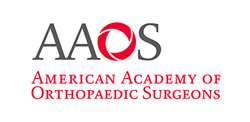Ultrasound Guided Injections
Introduction
Ultrasound is a common imaging technique that employs high frequency sound waves to create images of organs and other internal structures of the body. These images provide valuable information of underlying pathology of the tissues and assists with diagnosis and planning the treatment of a particular condition. Ultrasound provides a clear view of the organs, tendons, muscles or joints and any associated disorders.
Ultrasound guided injection is a minimally invasive procedure used for treating various musculoskeletal painful conditions such as tendonitis, bursitis and neuritis or to perform cyst aspiration
It is also an excellent tool for guiding the placement of needles for both diagnostic as well as therapeutic purposes
Injection of a pain medication in combination with a local anesthetic directly to the site of injury helps to relieve pain. The advanced imaging of ultrasound provides high resolution images that enable the physician to precisely locate the injections deep into the target tissue without harming surrounding tissues.
Advantages
The advantages of ultrasound imaging compared to other imaging techniques include the following:
- No patient exposure to ionizing radiation.
- Able to assess tendons, ligaments and muscles under high resolution.
- Provides direct visualization of the area being treated.
- Ensures accurate placement of the needle to targeted areas.
Indications
The indications for diagnostic ultrasound imaging technique includes the following:
- Diagnose conditions such as tendon/ligament tears, inflamed bursa, joint fluid and cysts
- Assess painful pops and snaps that occur during movement.
- Deliver diagnostic injections to specific targets including joints and tendon sheaths or bursa.
- Help guide needle placement during needle aspirations or injections for patients with challenging anatomical variations or people taking blood-thinning medications.
- Aspiration of a ganglion cyst.
- Guide needles in percutaneous therapy for the treatment of calcific tendonitis.
Procedure
The procedure is used for diagnostic as well as therapeutic purposes. Anti-inflammatory medications such as corticosteroids and hyaluronans are the most commonly used medications to relieve pain, inflammation and swelling or to stimulate synovial fluid production to improve lubrication.
Shoulder joint injection technique
Shoulder joint injections are commonly used for certain conditions such as osteoarthritis, frozen shoulder, or tendonitis. The administration of the injection to the shoulder joint depends upon the condition to be treated. The approach for application of the injection may be anterior, posterior, superior or inferior aspect of the joint.
During an ultrasound guided injection, the patient will be asked to lie or sit down on a table depending on the site of the injection. A clear water based conducting gel is applied over the skin to assist with transmission of the sound waves. The doctor moves a hand-held probe, called a transducer, over the targeted area. The transducer emits sound waves and detects the rebound echoes from the tissue. Images are created from these sound waves and can be viewed on the video display screen attached to the scanner. The waves provide a clear view of the targeted area and helps the doctor locate the correct site for injection.
Knee joint injection technique
Knee joint injections are frequently used for knee conditions such as osteoarthritis, baker's cyst or knee bursitis.
During the administration of the injection the patient will be positioned lying down and a clear water based conducting gel is applied over the targeted site. The gel is used for transmission of the sound waves to deeper structures. The doctor moves the hand-held transducer over the targeted area to provide images of internal structures. Under the guidance of ultrasound, the doctor inserts the needle into the skin to reach the targeted location. The procedure can be used for injecting medications or to aspirate fluid from the affected tissue.
Risks
Ultrasound guided injection is a relatively safe and painless procedure. Some of the associated complications include bleeding at the site of insertion, and injury to adjacent structures. Patients can resume their normal activities immediately after the completion of the procedure.
Click on the topics below to find out more from the orthopaedic connection website of American Academy of Orthopaedic Surgeons.
- The Shoulder
- Arthritis of the Shoulder
- Broken Collarbone
- Dislocated Shoulder
- Fracture of the shoulder blade (scapula)
- Frozen Shoulder
- Rotator Cuff Tears
- Separated Shoulder
- Shoulder Impingement (Bursitis, Tendinitis)
- Shoulder Joint Replacement
- Shoulder Joint Tear (Glenoid Labrum Tear)
- Thoracic outlet syndrome
- Shoulder Arthroscopy






